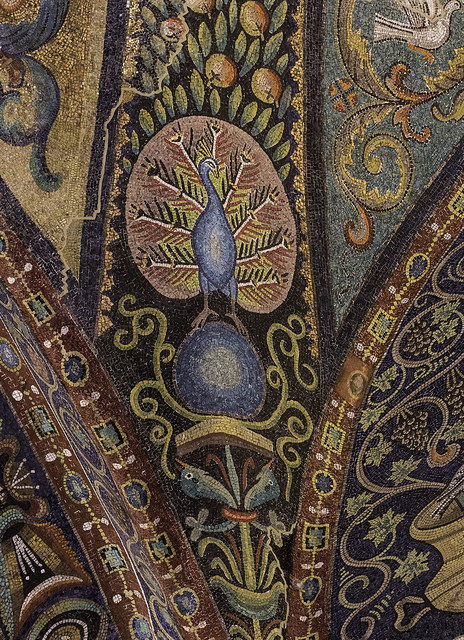Ancient Christians had a deep appreciation for the power of a symbol. So many meanings can be packed into a single, simple mark or object. Do you we need to bring some of these back?
Maybe you’ve seen some of these before and not fully understood them, and maybe some of them you didn’t know about. Either way, enjoy!
[See also: 3 Amazing Symbols Hidden in the Sign of the Cross]
[See also: The Sign From Which Demons Flee]
1) Staurogram / Tau-Rho

The Staurogram, or Tau-Rho, is a Greek tau (T) combined with a Greek rho (P), and was used in the early church as an abbreviation for the Greek word for cross.
The letters also sometimes had a deeper meaning. The tau could symbolize the cross on its own. The rho had the numerical value of 100, which itself could either be a reference to the Greek word for help (which also had the numerical value of 100), or as a reference to Abraham (himself taken as a symbol of the Messiah) because Abraham procreated Isaac when he was 100 years old.
2) Peacock

The Ancient Greeks believed that the flesh of peacocks didn’t decompose after death, and so peacocks became a symbol of immortality. Early Christians adopted the symbol to represent their belief in eternal life in heaven with God, and was often depicted with the Tree of Life.
3) Pelican

Medieval Europeans believed that pelicans were particularly attentive to their young, even to the point of wounding itself and letting its young drink its blood when no food was available. As a result, the pelican became a symbol of Christ’s passion, poring out his blood for the forgiveness of sins, as well as the Eucharist.
4) Ichthys

Ichthys is the Greek word for fish, and it was one of the most important early Christian symbols. Not only did fish feature in several miracles of Jesus in the Gospels, but the ichthys was taken as an acrostic for the Greek phrase “Iēsous Christos Theou Hyios Sōtēr,” which means “Jesus Christ, Son of God, Savior.”
5) Alpha and Omega

In the book of Revelation, Jesus says of himself, “I am Alpha and Omega, the First and the Last, the Beginning and the End.” (Rev 22.13) Alpha is the first letter of the Greek alphabet, and Omega is the last one. Putting the two together, they represent the eternity of Christ as the Son of God.
6) Chi-Rho

The Chi-Rho is a combination of the Greek letter chi (X) and rho (P), which are the first two letters of the Greek word for “Christ,” and so when put together represent “Jesus.”
7) IH Monogram

The IH Monogram consists of the Greek letters iota (I) and eta (H), which are the first two letters of the word “Jesus” in Greek, and as such was a common shorthand for “Jesus.”
8) IX Monogram

The IX Monogram consists of the Greek letters iota (I) and chi (X). Iota is the first letter of the Greek word for “Jesus,” and chi is the first letter of the Greek word for “Christ.” Put together, they function as a shorthand for “Jesus Christ.”
9) Anchor

In the ancient world, anchors symbolized safety. The author of the Hebrews adapted this symbol for the hope Christians have in Christ: “We have this as a sure and steadfast anchor of the soul, a hope that enters into the inner place behind the curtain, where Jesus has gone as a forerunner on our behalf, having become a high priest forever after the order of Melchizedek.” (Heb 6.19-20)
[See also: QUIZ: Can You Identify These Liturgical Objects?]
[See also: QUIZ: Can You Match These Liturgical Latin Phrases With Their Meanings?]

